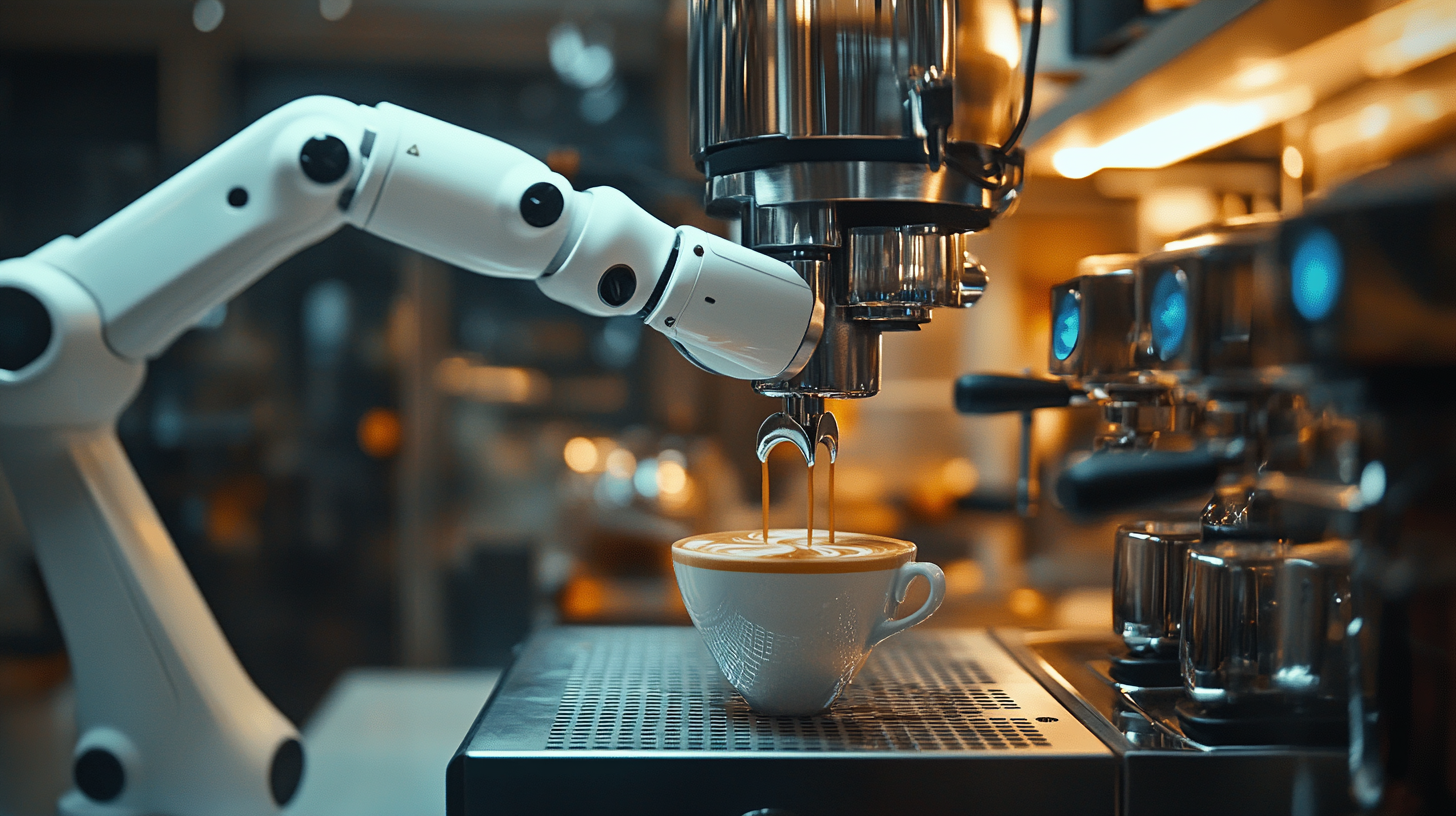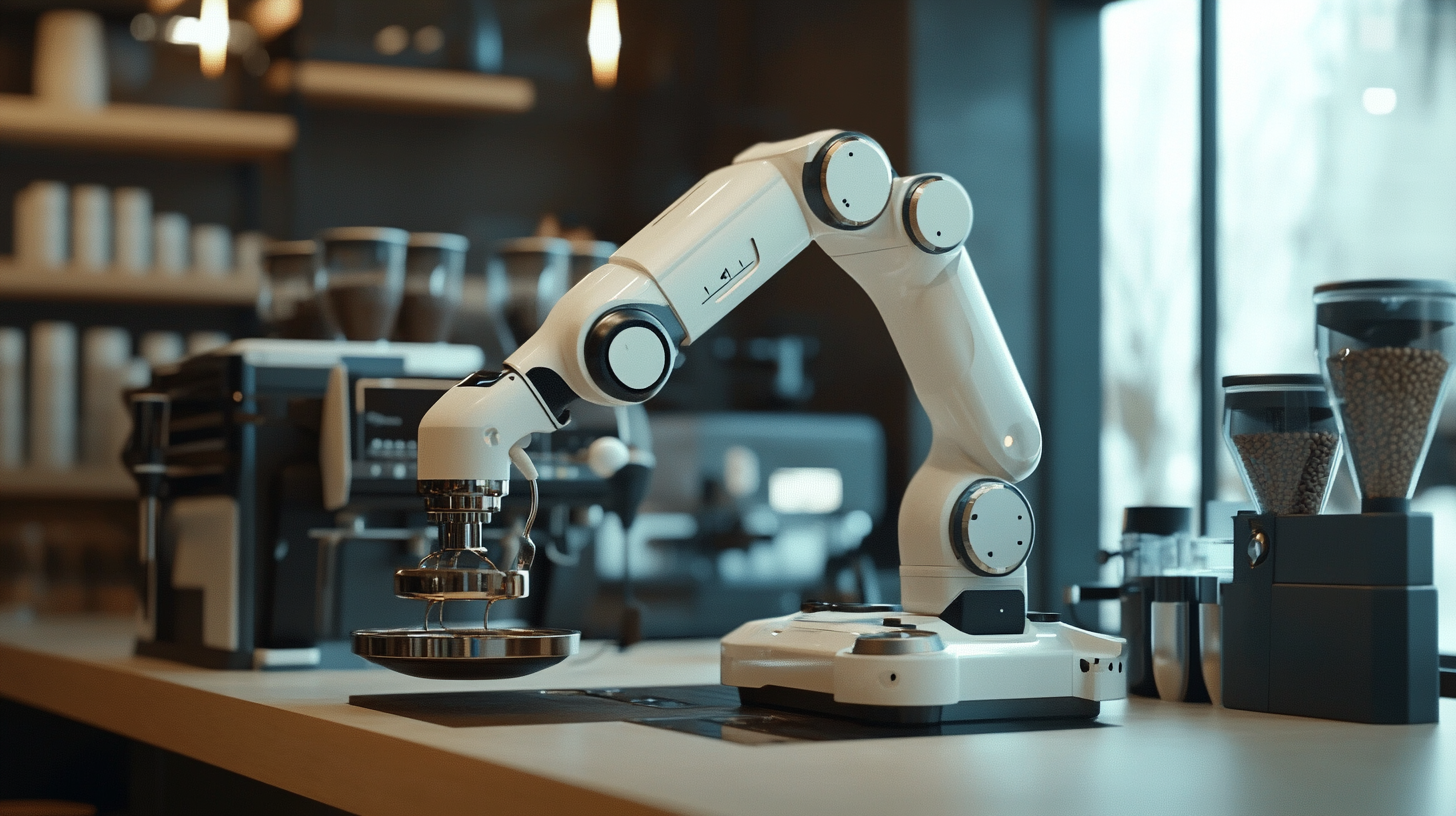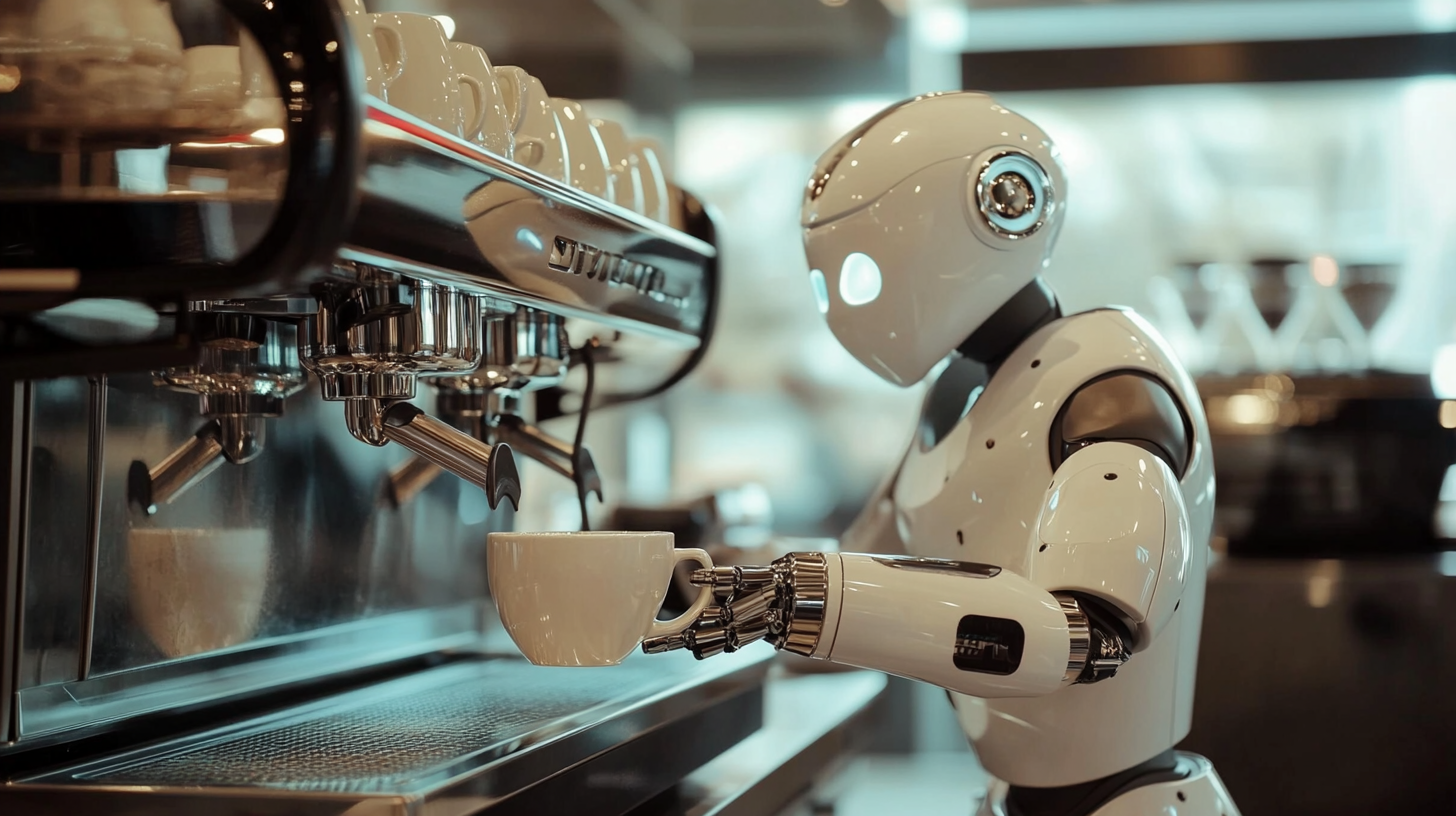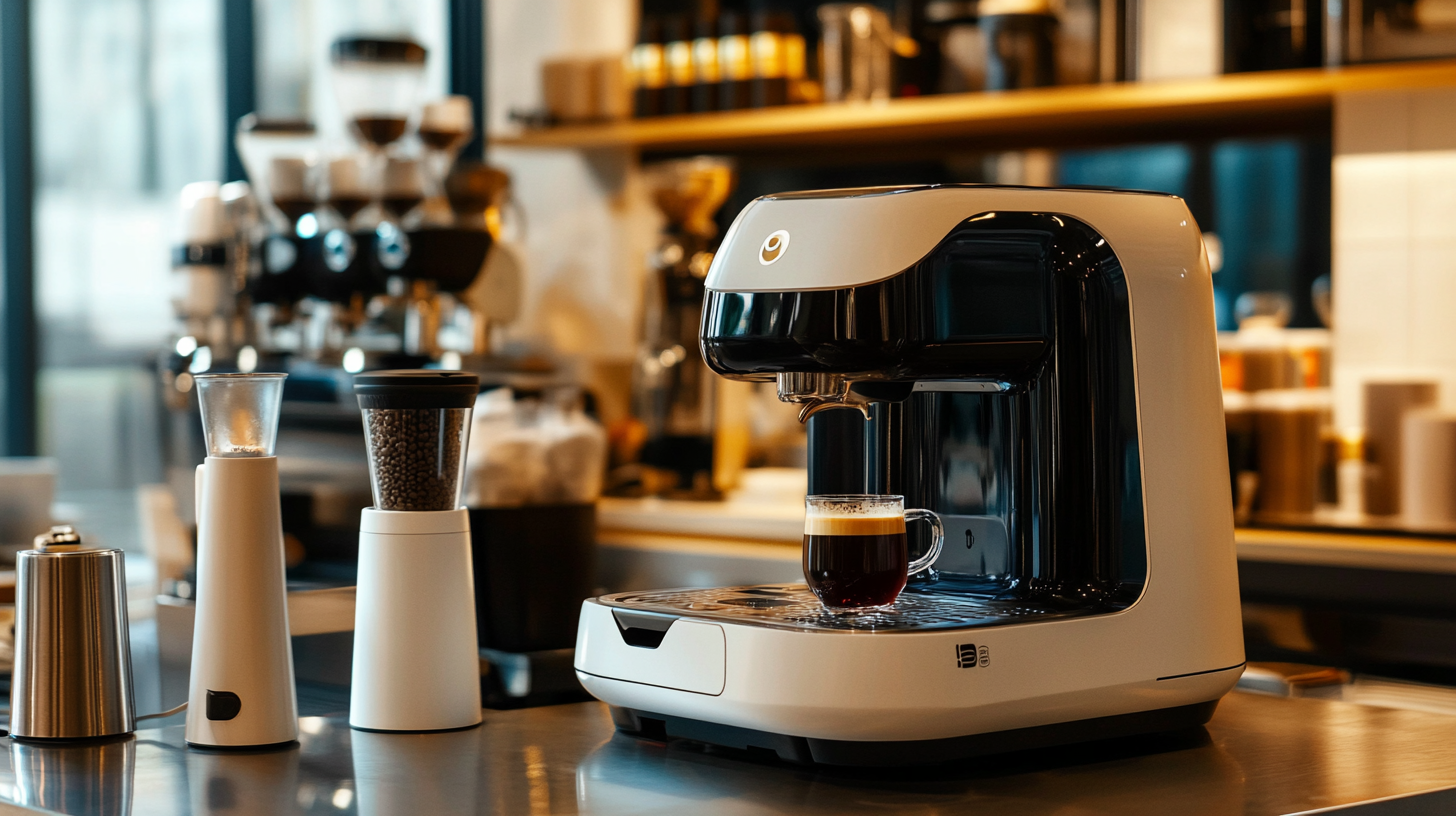Revolutionizing Coffee Experience with Robot Coffee Shops in the Food and Beverage Industry
Technological advancements and shifts in consumer preferences are causing a real upheaval in the food and beverage segment. Introduction of robot coffee shops presses the need for deploying automation to better the customer experience and operational performance. Statista's latest reports state the global coffee market is expected to reach an estimated value of $102 billion by 2026, fuelled by the demand for convenience and innovation in brewing solutions. This trend reinforces the need for robot coffee shops to cater to a tech-savvy customer that demands quality and quick service.
While these robot coffee shops gain attention worldwide, they not only change the dynamics of a traditional coffee shop experience but also offer a solution to major challenges facing the industry including labor shortage and increasing operational expenditure. According to a National Coffee Association study, 79% of U.S. adults drink coffee, giving a massive market opportunity for robots to help prepare and serve coffee. The seamless marriage between cutting-edge technology and masterfully crafted beverages is about to change forever the way consumers enjoy their daily caffeine fix and secure an exciting future for robot coffee shops in the food and beverage landscape.

The Rise of Robot Coffee Shops: Transforming the Beverage Landscape
In many ways, the onset of robot coffee shops means even bigger changes in the world of drinks. These establishments are redefining the world of coffee and the interactions of consumers with it by combining technology with excellent service. Customers of automated baristas experience a more efficient and accurate ordering process. No more waiting in line; customers touch a screen to order their favored brew and have the option to watch as robots prepare their drinks. With technology on the rise, the existence of robotic cafés grows even more appealing. An espresso to-go is only slightly less interesting than watching a robotic arm whip up the latte or cappuccino in an altogether different way. This mix of robotics never before introduced into the food and beverage industry will not only add value and attraction to customer experience but also free the human team to do much more interesting and complex tasks such as customer interaction and setting the ambience. Additionally, the rise of robot coffee shops encourages sustainability initiatives. Many robotic setups are crafted with the idea of operating with minimum waste, using exact measurements in order to prevent excess ingredients, reducing the mess left on the worktop, and cleaning up afterward. These eco-friendly considerations add charm to a growing consumer segment concerned about the environment. With the advancement of technology, one thing is clear; robot coffee shops are not a fad; they are an evolution in the beverage industry and will form the foundation for a much softer coexistence of convenience and sustainability.

How Automation is Enhancing Customer Experience in Coffee Shops
Automation in coffee shops is changing the customer interaction with their beloved beverage. With robot baristas, coffee shops can now guarantee consistency and speed beyond what is traditionally achievable. The automated setup gives precise measurements and brewing times so that every coffee cup served can be of the utmost quality possible, hence enhancing its flavor characteristics and minimizing wait time with the benefit of customers being able to receive their drinks without the hindrance of long queues.
On top of that, robot coffee shops also use advanced algorithms and machine learning to further enhance a personalized experience. These allow the robots to learn individual preferences to recommend valid drink options. Therefore, a customer is allowed to order their favorite beverages with just a few taps of a screen, while the system stores specific preferences for future visits. Such level of customization makes the atmosphere much more engaging and fun since the customers feel cared for and understood even without direct human interaction.
Also, the design vision of robot coffee shops builds a modern coffee culture that is enticing for tech-oriented customers. These restaurants' sleek design, high-tech environment, and watchful eyes from patrons generate curiosity and excitement. Viewing robots calmly assemble their drinks adds a dash of excitement to an otherwise banal coffee run, turning the act into a blend of convenience and entertainment. This new take enhances customer satisfaction, while also promoting them as figureheads in the modern food and beverage trade.

The Technology Behind Robot Baristas: Innovations in the Coffee Making Process
The next milestone in food and beverage production is to have people do the final steps of preparing a coffee beverage using robots. This is a radical transformation of coffee consumption experience for customers. Recent advances have produced robot baristas that take care of grinding the beans and brewing, appealing directly to a set of tech-savvy customers. One example, the humanoid robot "Tianwen" works efficiently in a coffee shop yet shows a very personalized customer interaction. This also corresponds with recent market reports suggesting that automation in food service would enhance operational efficiency by almost thirty percent along with considerable savings in labor cost.
Innovative coffee robots such as COFE+, for instance, are quaking with excitement across coffers, revealing their capacities beyond those of spewing coffees. These robots greet customers, interpret languages and amuse comic routines for everyone to find out how the technology is intertwining with customers to be second best in quality beverages. Fresh statistics reveal that by 2025, the world over would have a coffee robot market worth several billion dollars, driven by customers wanting more and better service continually.
Beyond this, smart cities are becoming the home to the advanced technologies in coffee making incorporated within their own public distributions, such as by metro stations or retail. Today, consumers can therefore enjoy their favorite drinks made by high-end machines endowed with the latest process technologies, reflecting the best of both worlds in terms of quality and convenience. With the heavy reliance on AI and robotics in their operations, the businesses involved fit into the growing population that requires good ideas as well as quality coffee.

Impact of Robot Coffee Shops on Employment and Workforce Dynamics
With the introduction of robot coffee shops, there is a fundamental shift in employment within the food and beverage industry. It was found by the National Coffee Association that around 54% of American adults consume coffee every day. So this gives a boost to the industry demand as well as dynamic demand on workforce. With advances in automation technology, these robotic installations do provide a streamlined solution for coffee preparation and service: little or no large staff teams or huge employment overheads. Studies have shown that the service speed can be improved up to 300% through installing such robots, and therefore the human role will be replaced at most to some extent.
Yet the adaptation of robot coffee shops raises key employment-altering issues when it comes to the levels of employment in the niche. According to the World Economic Forum, about 85 million jobs around the world could disappear through automation by 2025, with low-skill jobs being the most vulnerable. Competition, it seemed, was likely to arise from baristas and service personnel against machines capable of offering consistent service at lower costs. Nonetheless, such a change might steer the human labor force to other skills that are higher, such as machine maintenance, programming, and customer engagement, to name a few areas where there will be new jobs in such a high-turnover industry.
But it is this very process that poses the greatest challenge. Upskilling and reskilling would therefore be necessary interventions, according to the International Labor Organization, to meet this challenge. The future in such innovative contexts includes robotic coffee shops: there will be increased efficiency and innovation. But this also calls for a stakeholder approach, in which technology developers, educators, and industries may join forces with an interest in the new fairer future that will bring newly opened doors into an increasingly automated world.
Exploring the Future: What’s Next for Robotics in the Food and Beverage Industry
The most proximate to the ground-breaking phases is that of the integration of robotics in an increasing number of parts of the food and beverage industry, thus paving the way for transformation in consumer experiences. Robotic coffee shops have grown as a trend that automatically increases the personalization and efficiency of the service. These robotic systems not only brew the ideal cup of coffee as would a human barista but go one step further; they interact with clients to serve them unique drinks made exclusively to each client's tastes. This really signals a remarkable shift towards individualized catering in what was a highly standardized industry.
The underpinning technology, of which Artificial Intelligence and Machine Learning are main propelled forces, is meant to revolutionize several aspects of food and beverage operations. The sector foresees a compound annual growth rate of about 12% between 2023 up to 2032 regarding the budding food robotics market. Thus, we will be expecting a great deal when it comes to better productivity and quality of goods. Besides, as labor shortcomings hit companies more, the additional demand for an emerging role of robotics will move forward without jeopardizing service quality.
It is also noteworthy that increasing investment in sectors like technology, AI, and robotics herald promising integration of the new innovations in the food setting. For example, the record-breaking investment in robot-assisted establishments seems to herald just the early beginnings of a general trend towards automation, mainly as players look forward to optimizing efficiency and satisfaction of consumption. Certainly, this depicts the current perceptions of consumers but is also a sign of a change in how business will operate in the future-a very dynamic future for the food and beverage world.
